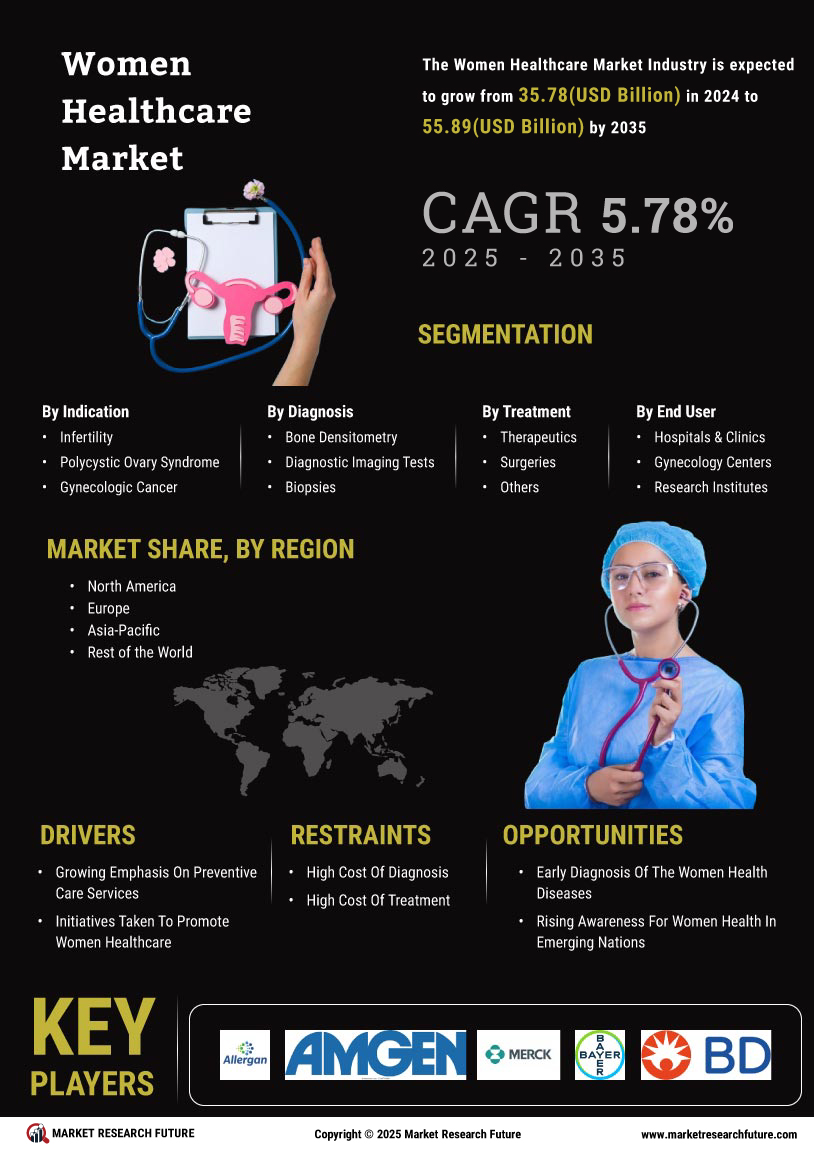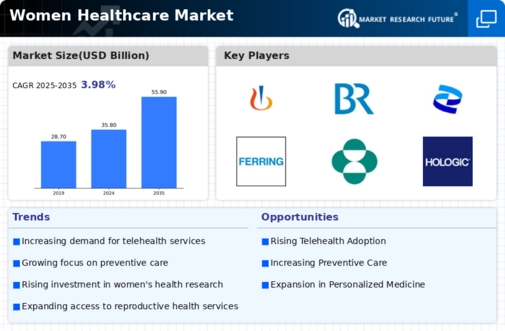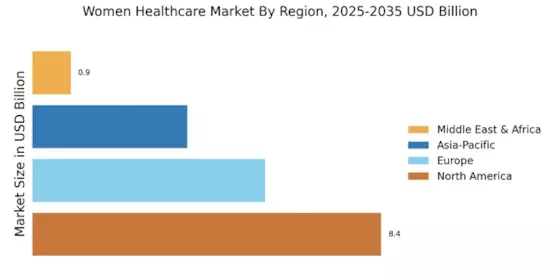Policy Changes and Healthcare Reforms
The Women Healthcare Market is being shaped by ongoing policy changes and healthcare reforms aimed at improving access to care for women. Legislative efforts to enhance insurance coverage for women's health services, including maternity care and preventive screenings, are gaining traction. Recent reforms have led to an increase in the number of women with health insurance, which is crucial for accessing necessary healthcare services. As policies evolve, the Women Healthcare Market is likely to see a shift in service delivery models, with an emphasis on integrated care that addresses the holistic needs of women. This could potentially lead to improved health outcomes and greater satisfaction among patients.
Technological Advancements in Healthcare
Technological innovations are transforming the Women Healthcare Market, enhancing the quality and accessibility of healthcare services. The integration of advanced diagnostic tools, wearable health technology, and mobile health applications is empowering women to take charge of their health. For instance, telemedicine platforms have seen a significant increase in usage, with reports indicating a 30% rise in consultations for women's health issues. These advancements not only improve patient outcomes but also streamline healthcare delivery, making it more efficient. As technology continues to evolve, the Women Healthcare Market is likely to benefit from increased investment in digital health solutions, further expanding access to essential services for women.
Increased Awareness of Women's Health Issues
The Women Healthcare Market is experiencing a notable surge in awareness regarding women's health issues. This heightened consciousness is largely driven by educational campaigns and advocacy groups that emphasize the importance of women's health. As a result, women are increasingly seeking preventive care and regular health check-ups. According to recent data, nearly 60% of women report being more proactive about their health than in previous years. This trend is likely to continue, as more women recognize the significance of early detection and treatment of health conditions. Consequently, the Women Healthcare Market is poised for growth, as healthcare providers adapt to meet the rising demand for specialized services tailored to women's unique health needs.
Aging Population and Chronic Health Conditions
The Women Healthcare Market is significantly influenced by the aging population and the prevalence of chronic health conditions among women. As life expectancy increases, more women are living with chronic diseases such as diabetes, hypertension, and osteoporosis. This demographic shift necessitates a greater focus on specialized healthcare services tailored to the needs of older women. Data suggests that by 2030, the number of women aged 65 and older will increase by 20%, further straining healthcare resources. Consequently, the Women Healthcare Market must adapt to address the unique health challenges faced by this population, ensuring that appropriate care and support systems are in place.
Growing Demand for Reproductive Health Services
The Women Healthcare Market is witnessing a growing demand for reproductive health services, driven by changing societal norms and increased focus on family planning. Women are increasingly seeking comprehensive reproductive health services, including contraception, fertility treatments, and prenatal care. Recent statistics indicate that the market for reproductive health services is projected to grow at a compound annual growth rate of 5.5% over the next five years. This trend reflects a broader recognition of the importance of reproductive health in overall well-being. Healthcare providers are responding by expanding their offerings and ensuring that services are accessible and affordable, thereby contributing to the growth of the Women Healthcare Market.


















Leave a Comment